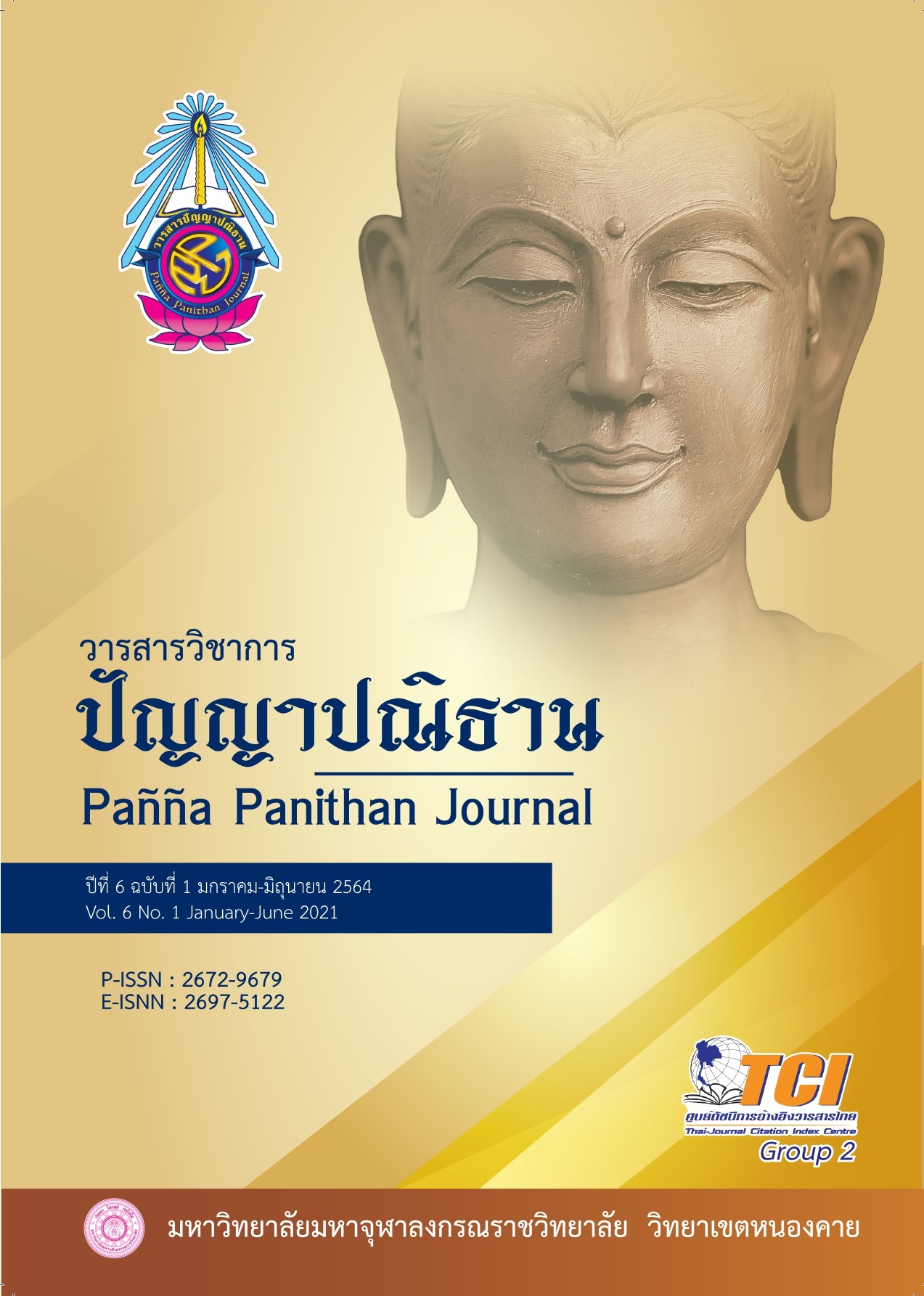A WORLD HERITAGE SITE OF AJANTA CAVE
Main Article Content
Abstract
Abstract
Ajanta cave located in the mountains of Indiya Tree in Aurangabad, Maharashtra, India. It is the most beautiful and oldest Buddhist cave temple in the world. There are 30 caves located in the midst of peaceful nature and suitable for meditation practice. Early caves belonged to Theravada Buddhism. In the latter period belonged to Mahayana Buddhism. It is assumed that the cave was built by Buddhist priests and devotees During 350 B.E. ended about 1200 B.E. (between 200 B.C. and 650 A.D.). The caves discovered by John Smith in 1819, later in 1984, UNESCO registered a UNESCO World Cultural Heritage Site worthy of conservation for three reasons: architecture, the cave construction plan is designed perfectly and is strong construction. It is a learning center for the evolution of architecture, planning and design of residential construction as well. Sculpture, there are the Buddha images which are delicately inside. It clearly shows the faith in the Triple jam and the firmness in Buddhism of the people of that era. Mural, there are the paintings of Buddha history, the Bodhisattva images and the pictures clearly describes the atmosphere in the way of people’s life at that time. Each painting uses a technique that is fine art and colors on the images in an exquisite, beautiful and durable until present. Which had a great influence on the study of wall art and is also evidence of the life of the people in that era as well. So it can be said that, These 3 elements are valued perfectly including social, educational and psychological.
Article Details
References
เอกสารอ้างอิง
กำจร สุนพงษ์ศรี. (2522) . ข้อคิดบางประการเกี่ยวกับประติมากรรม. กรุงเทพมหานคร : เจริญวิทย์การพิมพ์.
ไชยเจริญเทค จำกัด. (2560). สถาปัตยกรรม คืออะไรเจาะลึกการออกแบบก่อสร้างอย่างครบวงจร. เรียกใช้เมื่อ 29 มกราคม 2563 จาก https://www.chi.co.th
ต่อศักดิ์ สะสมทรัพย์. (2548). ศิลาวรรณนาและโครงสร้างของหินบะซอลต์ในประเทศไทย. กรุงเทพมหานคร : กองวิเคราะห์และตรวจสอบทรัพยากรธรณี กรมทรัพยากรธรณี.
ฝ่ายวิชาการ สถาพรบุ๊คส์. (2555). มรดกโลกทางวัฒนธรรมในอาเซียน. กรุงเทพมหานคร : สำนักพิมพ์สถาพรบุคส์.
พระธรรมปิฎก (ป.อ. ปยุตฺโต). (2542). จาริกบุญ จารึกธรรม. กรุงเทพมหานคร : สหธรรมิก จำกัด.
พระพรหมคุณาภรณ์ (ป.อ. ปยุตฺโต). (2547). จาริกบุญ จารึกธรรม. พิมพ์ครั้งที่ 10. กรุงเทพมหานคร : พิมพ์สวย จำกัด.
พระพรหมคุณาภรณ์ (ป.อ.ปยุตฺโต). (2555). กาลานุกรมพระพุทธศาสนาในอารยธรรมโลก. พิมพ์ครั้งที่ 6/1. กรุงเทพมหานคร : สำนักพิมพ์ผลิธัมม์.
พระมหาดาวสยาม วชิรปฺญฺโญ. (2546). ประวัติศาสตร์พระพุทธศาสนาในอินเดีย. กรุงเทพมหานคร : พิมพ์สวย.
_____________________. (2548). ถ้ำพุทธศาสนาในอินเดีย. กรุงเทพมหานคร : โรงพิมพ์เลี่ยงเชียง.
____________________. (2557). ประวัติศาสตร์พระพุทธศาสนาในอินเดีย. กรุงเทพมหานคร : เอกพิมพ์ไท จำกัด.
พระมหาประภาส ปริชาโน. (2560). อชันต้า: ถ้ำมหาสังฆารามแห่งรัฐมหาราษฎร์. วารสารพุทธปรัชญาวิวัฒน์, 1(1), 3-4.
พระวิเทศรัตนาภรณ์ (ถนัด อตฺถจารี). (2560). จาริกบุญแสวงธรรมสู่แดนพุทธภูมิ. นนทบุรี : นิติธรรมการพิมพ์.
มหาจุฬาลงกรณราชวิทยาลัย. (2539). พระไตรปิฎกภาษาไทยฉบับมหาจุฬาลงกรณราชวิทยาลัย.กรุงเทพมหานคร : โรงพิมพ์มหาจุฬาลงกรณราชวิทยาลัย.
______________________. (2557). อรรถกถาภาษาไทย พระไตรปิฎกฉบับมหาจุฬาลงกรณราชวิทยาลัย. กรุงเทพมหานคร : โรงพิมพ์มหาจุฬาลงกรณราชวิทยาลัย
มหาวิทยาลัยรามคำแหง. (2546). มรดกโลก. เรียกใช้เมื่อ 5 มกราคม 2564 จาก www.info.ru.ac.th›province›Sukhotai›world1.htm
ยอดชาย พรหมอินทร์. (2562). ตำราจิตรกรรมไทยประเพณี. สงขลา : คณะศิลปศาสตร์ มหาวิทยาลัยทักษิณ.
รณชัย โตสมภาค. (2556). ACADEMIC FOCUS. กรุงเทพมหานคร : สำนักวิชาการสำนักงานเลขาธิการสภาผู้แทนราษฎร.
เสรีชน: เสรีธรรม. (2560). ถ้ำอชันต้าพลังแห่งศรัทธามหัศจรรย์ศาสนสถานในอินเดีย มรดกโลก. เรียกใช้เมื่อ 31 มกราคม 2563 จาก http://dhamma.serichon.us

